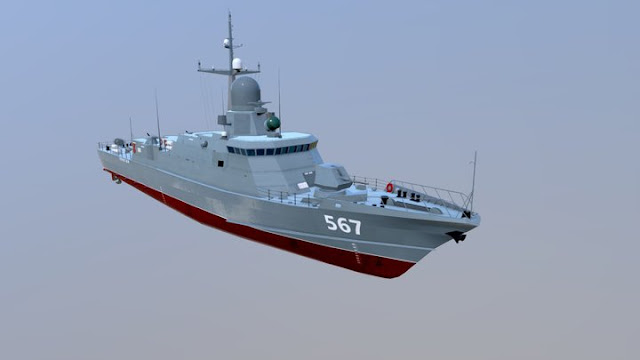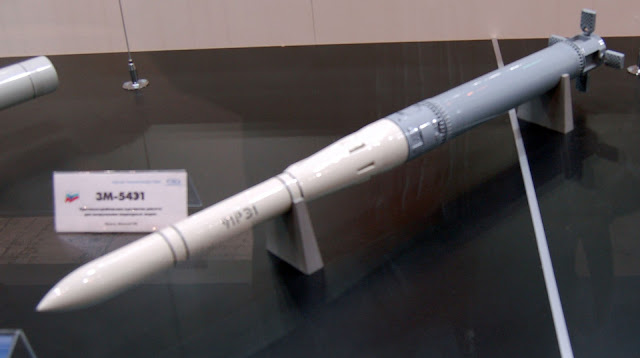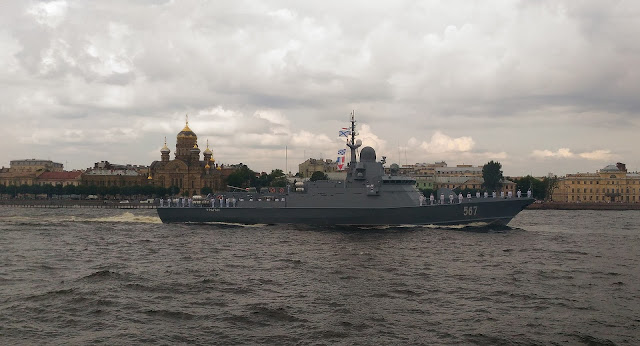Il General Electric AVIO Catalyst (precedentemente Advanced Turboprop o ATP ) è un motore a turboelica in fase di sviluppo da GE Aviation. È stata presentata il 16 novembre 2015 e alimenterà inizialmente il Cessna Denali. Questa nuova turbina ha girato al banco per la prima volta il 22 dicembre 2017 e sarà certificata nel 2020. Il motore da 850 a 1.600 CV (da 630 a 1.190 kW) punta a un'efficienza del 20% migliore rispetto alla concorrenza grazie a un rapporto di pressione complessivo di 16:1, palette di statore variabili, pale di turbina raffreddate, parti stampate in 3D e controlli FADEC.
SVILUPPO
Dopo aver introdotto la General Electric H80 nel 2010 per migliorare la Walter M601, GE ha iniziato ad analizzare la sua concorrenza ed ha ideato un motore dal design pulito nel 2014 che è stato selezionato per il Cessna Denali. Nel settembre 2015, General Electric ha creato un centro di sviluppo per turbopropulsori europei, dopo la chiusura della US-Exim Bank a giugno, investendo oltre $ 400 milioni e creando da 500 a 1.000 posti di lavoro. Il motore fu presentato il 16 novembre 2015 alla fiera annuale della National Business Aviation Association.
La scatola di ingranaggi, la turbina e il combustore saranno realizzati a Torino e i componenti rotanti saranno forniti da Varsavia: entrambi i siti appartenenti ad Avio, acquisiti da GE nel 2013; la catena di montaggio finale dovrebbe essere presso Walter Engines a Praga. Il nuovo propulsore sarà certificato nel 2020. È stato progettato dagli ingegneri Avio Aero, e dal Centro di progettazione tecnica congiunta tra GE Aircraft Engines e Warsaw Institute of Aviation.
A tutt’oggi, il veicolo compressore assiale-centrifugo - gruppi statore, rotore e sezione fredda -vengono testati a Monaco per verificarne l'efficienza, le prestazioni e l'operabilità.
TEST
Dopo due anni di sviluppo, la turbina di GE ha completato la sua prima prova a Praga il 22 dicembre 2017. Dopo aver testato la maggior parte dei componenti e il funzionamento del motore, GE Aviation mantiene i suoi obiettivi prestazionali e spera di superarli. Ha iniziato i test di certificazione nel 2018, convalidando l'aerodinamica, la meccanica e i sistemi aerotermici. Il motore ha effettuato il primo volo su di un Cessna Denali alla fine del 2018 e completerà oltre 2000 ore di test prima che il Denali entri in servizio. GE Aviation Czech, la sede di sviluppo, collaudo e produzione, ha assunto circa 180 dipendenti, con altri 80 previsti nel 2018 tra altri 500 per l'intero impianto a pieno ritmo di produzione.
È stato sviluppato nel corso di due anni da 400 designer, ingegneri ed esperti di materiali GE in Repubblica Ceca, Italia, Germania, Polonia, Stati Uniti e altrove.
Si apriranno sei celle di prova, saranno costruiti 10 motori di prova e nel 2018 è stato testato su di un banco di prova volante; i test di certificazione nel periodo 2018-2019 hanno incluso test di altitudine, prestazioni e vibrazioni elevate.
Il motore è stato assemblato e strumentato per le prove in quota ed è stato testato in Canada nell'estate 2018. A partire dalla fine del 2018, la Cessna riceverà tre motori per preparare il volo inaugurale Denali nel primo trimestre 2019. Il suo sviluppo è del 30% più veloce rispetto ai precedenti nuovi progetti GE in quanto il programma di sviluppo ha 10 motori, oltre a diverse ricostruzioni. Sono stati altresì effettuati complessivamente 33 test motore, inclusi 17 test di certificazione. La certificazione non richiede un banco di prova volante ma un King Air 350 modificato è stato utilizzato per l'autorizzazione di sicurezza al volo all'inizio del 2019, prima delle prove di volo sul Cessna Denali. Alla fine di maggio 2018, sono state completate 60 ore di test, anche a piena potenza, mentre il secondo gruppo motore era quasi completo per una prima corsa estiva, la certificazione dei componenti è stata seguita da test di certificazione per l'intero motore, a partire da test di ingestione e altitudine. Il primo motore ha funzionato per oltre 100 ore mentre un secondo motore è in funzione a Praga prima di essere inviato in Canada nel corso dell'anno per i test di altitudine, le prestazioni sono sul target o migliori del previsto.
A maggio 2019, i motori di prova hanno funzionato fino a 41.000 piedi in una camera di altitudine e oltre 1.000 ore, simulando tre anni di operazioni, mentre il FADEC ha corso 300 ore sul Denali. Oltre 1.000 cicli del motore hanno registrato 1.600 ore di prove: 1.200 ore in celle di prova e 400 ore in impianti di compressione. I test di altitudine, resistenza, vibrazione, durata e ingestione sono stati completati, poiché i test integrati di controllo dell'elica e le prove di velocità eccessiva del compressore ad alta pressione e della turbina del generatore di gas. I nuovi requisiti dei test hanno spinto la consegna del primo motore al 2020 e il primo volo Cessna Denali è andato ancora oltre. A quel punto erano stati assemblati cinque motori e altri due sono stati completati prima della fine del 2019. Il primo test di volo a bordo di un King Air è stato ritardato fino alla primavera del 2020 e la certificazione per l'autunno 2021, dopo una campagna di 18 mesi, a causa dei nuovi requisiti dei test FAA, inclusi i test di ghiaccio.
MERCATO
L'ATP è destinato a coprire il mercato tra H80 e CT7.
Sarà in concorrenza con il Pratt & Whitney Canada PT6, prodotto in 51.000 unità e leader del mercato dei piccoli turbo-propulsori per 50 anni, aggiungendosi al General Electric H80 con potenza inferiore a 850 cavalli.
Il Catalyst è stato selezionato per alimentare il nuovo velivolo a turboelica monomotore Cessna Denali, che può ospitare fino a 12 passeggeri a oltre 280 nodi su 1.500 miglia nautiche. GE prevede di investire fino a $ 1 miliardo nel progetto, inclusi $ 400 milioni per un centro di produzione in Europa.
DESIGN
Il turboelica avanzato da 1.300 shp potrebbe essere esteso in un intervallo da 850 a 1.600 shp. Il rapporto di pressione complessivo di 16: 1 consente un consumo di carburante inferiore del 20% e una potenza di crociera superiore del 10% rispetto alla concorrenza della stessa classe di dimensioni con un tempo medio tra 4000 e 6000 ore tra le revisioni (MTBO). Il compressore è derivato dal General Electric T700 con quattro stadi assiali e un singolo stadio centrifugo, con lo stesso design aerodinamico 3D utilizzato nel GE9X. Il motore include palette statoriche variabili (VSV) e parti stampate in 3D.
Il combustore unidirezionale a flusso inverso ricorda il design GE-Honda HF120. La turbina ad alta pressione a cristallo singolo a due stadi sarà la prima in questa classe di motori ad essere completamente raffreddata. La turbina a bassa pressione a tre stadi è controrotante. Un sistema di controllo della propulsione integrato FADEC governerà sia il motore che il passo dell'elica come un intero sistema.
Dodici parti stampate in 3D sostituiscono 855 parti: telai, guaine del combustore, pozzetti, scatola di scarico, alloggiamenti dei cuscinetti, componenti fissi nel percorso del flusso e scambiatori di calore. Il peso complessivo è ridotto del 5% e il consumo di carburante specifico per i freni è migliorato dell'1%. La stampa 3D non viene utilizzata per componenti rotanti come lame, dischi e rotori. Il 35% del motore sarà stampato presso GE, riducendo il numero di pezzi serializzato a 35. Sono stampati da una lega di titanio.
Il tempo tra le revisioni è di 4.000 ore, il 33% in più rispetto al suo principale concorrente. È il primo turbopropulsore della sua categoria con due stadi di palette statoriche variabili. Sarà caratterizzato da un sistema di eliche composito a cinque pale di McCauley, una filiale di Textron.
I turbopropulsori ora devono essere certificati per la glassa dei cristalli di ghiaccio ad alta quota: un blisk del compressore deve sopravvivere all'impatto di una palla di ghiaccio. Ciò richiederebbe un primo stadio più pesante di 1,1 libbre (2 libbre) e ostacolerebbe l'aerodinamica del motore. GE ha proposto di canalizzare verso l'olio motore l'ingresso di olio caldo da un pozzetto del cambio accessorio per evitare la formazione di ghiaccio e lo testerà in una struttura canadese per il freddo nell'estate 2018.
Le turbine raffreddate consentono temperature di funzionamento superiori a 149° C (300° F). I suoi FADEC, VSV e una turbina LP controrotante a tre stadi generano una potenza di crociera superiore del 10%, mantenendo l'efficienza di picco in condizioni di fuori progetto per una migliore frequenza di accelerazione e potenza di altitudine. Il pozzetto monopezzo sostituisce 45 parti convenzionali e verrà stampato in soli quattro giorni prima di 14.
ENGLISH
The General Electric Catalyst (formerly Advanced Turboprop, or ATP) is a turboprop engine under development by GE Aviation. It was announced on 16 November 2015 and will power the Cessna Denali, it first ran on December 22, 2017, and should be certified in 2020. The 850 to 1,600 hp (630 to 1,190 kW) engine aims for 20% better efficiency than its competition thanks to a 16:1 overall pressure ratio, variable stator vanes, cooled turbine blades, 3D printed parts and FADEC.
Development
After introducing the General Electric H80 in 2010 to improve the Walter M601, GE started analyzing its competition and devised a clean-design engine in 2014, then was selected for the Cessna Denali competition. In September 2015, General Electric created a European turboprop development center, after the US-Exim Bank closure in June, investing over $400 million and creating 500 to 1,000 jobs. The engine was announced on 16 November 2015 at the National Business Aviation Association's annual tradeshow.
The gearbox, power turbine and combustor will be made in Turin and the rotating components will be supplied from Warsaw, both locations belonging to Avio, acquired by GE in 2013, and the final assembly line should be at Walter Engines in Prague. It should be certified in 2020. It was designed by Avio Aero engineers, and the joint Engineering Design Center between GE Aircraft Engines and Warsaw Institute of Aviation.
In October 2017, GE received 85% of the parts, on track to deliver the first test engine by the end of the year. At this time, the axial-centrifugal compressor vehicle - stator, rotor and cold-section assemblies - was tested in Munich to validate its efficiency, performance and operability.
Testing
After two years of development, it completed its first test run in Prague on December 22, 2017. After most of the component tested and the engine run, GE Aviation maintains its performance objectives and hope to exceed them. It will begin certification testing in 2018, validating the aerodynamics, mechanics, and aerothermal systems. It is expected to power the Cessna Denali first flight in late 2018 and will complete over 2000 hours of testing before the Denali enter service. GE Aviation Czech, the development, testing and production headquarters, has recruited around 180 employees, with another 80 expected in 2018 among 500 others for the complete facility at full production rate. It was developed over two years by 400 GE designers, engineers and materials experts in the Czech Republic, Italy, Germany, Poland, the U.S. and elsewhere. Six test cells will open, 10 test engines will be built and it will be flown later in 2018 on a flying testbed, certification tests over 2018-2019 include altitude, performance and high-vibration testing.
In March 2018 the first sample ran nearly 40 hours before several years of health monitoring review. The next engine is assembled and instrumented for altitude trials and will be tested in Canada from summer 2018. From later in 2018, Cessna will receive three engines to prepare the first-quarter 2019 Denali maiden flight. Its development is 30% faster than previous new GE projects as the development program has 10 engines, plus several rebuilds. Over the next two years, 33 engine tests overall will happen including 17 certification tests. The certification do not require a flying testbed but a modified King Air 350 may be used for flight safety clearance early in 2019, before Denali flight tests. At the end of May 2018, 60 hours of testing were completed including at full power while second engine assembly was nearly complete for a summer first run, component certification was imminent and should be followed by whole-engine certification testing, starting with ingestion and altitude tests. By July 2018, the first engine ran over 100 hours while a second engine is running in Prague before being sent to Canada later in the year for altitude testing, performance is on target or better than predicted.
By May 2019, test engines ran up to 41,000ft in an altitude chamber and over 1,000 h, simulating three years of operations, while the FADEC ran 300 h in the Denali iron bird. By October 2019, over 1,000 engine cycles logged 1,600h of tests: 1,200h in test cells and 400h in compressor rigs. Altitude, endurance, vibration, durability and ingestion testing were complete, as integrated propeller controls tests and high-pressure compressor and gas generator turbine overspeed tests. New icing tests requirements pushed back the first engine delivery to 2020, and Cessna Denali first flight even further. Five engines were assembled by then, and two other should be completed before 2019 ends. First flight test aboard a King Air was delayed until spring 2020 and certification for autumn 2021, after a 18-month campaign, due to new FAA testing requirements, including icing tests.
Market
The ATP is intended to cover the market between the H80 and CT7. It will compete with the Pratt & Whitney Canada PT6, produced at 51,000 units and leading the small turboprop market for 50 years, adding to the sub-850 horsepower General Electric H80. It has been selected to power the new Cessna Denali single engine turboprop aircraft, seating up to 12 passengers at over 280 knots on 1,500 nautical miles. GE plans to invest up to $1 billion in the project, including $400 million for a manufacturing center in Europe.
Design
The 1,300 shp Advanced Turboprop could be extended in an 850 to 1,600 shp range. Its 16:1 overall pressure ratio allow a 20% lower fuel burn and 10% higher cruise power than same size class competition with a 4000–6000 hour mean time between overhauls (MTBO). The compressor is derived from the General Electric T700 with four axial stages and a single centrifugal stage, with the same 3D aerodynamics design used in the GE9X. The engine include variable stator vanes (VSVs) and 3D printed parts.
The reverse-flow single-annular combustor resembles the GE-Honda HF120 design. The two-stage single-crystal high pressure turbine will be the first in this class of engines to be fully cooled. The three-stage low-pressure turbine is contra-rotating. A FADEC integrated propulsion control system will govern both engine and propeller pitch as an entire system.
Twelve 3D-printed parts replaces 855 parts: frames, combustor liners, sumps, exhaust case, bearing housings, stationary components in the flowpath, and heat exchangers. Overall weight is reduced by 5% and brake specific fuel consumption is improved by 1%. 3D printing is not used for rotating components such as blades, discs and rotors. 35% of the engine will be printed at GE, reducing the serialized part count to 35. They are printed from a titanium alloy.
The time between overhauls is 4,000 hours, 33% more than its leading competitor. It is the first turboprop in its class with two stages of variable stator vanes. It will feature a composite, five-bladed propeller system from McCauley, a subsidiary of Textron.
Turboprops now have to be certificated for high-altitude ice crystal icing: a compressor blisk has to survive an impact from an ice ball. This would require a 2 lb (1.13kg) heavier first stage and would hamper the engine aerodynamics. GE proposed channelling to the engine inlet hot oil from an accessory gearbox sump to avoid growing ice and will test this in a Canadian cold weather facility in summer 2018.
Cooled turbines allow over 300°F (149°C) higher operating temperatures. Its FADEC, VSVs and a three-stage counter-rotating LP turbine generates 10% higher cruise power, maintaining peak efficiency at off-design conditions for better lapse rate and altitude power. The one-piece sump replaces 45 conventional parts and will be printed in just four days down from 14 initially.
(Web, Google, Wikipedia, You Tube)








































































